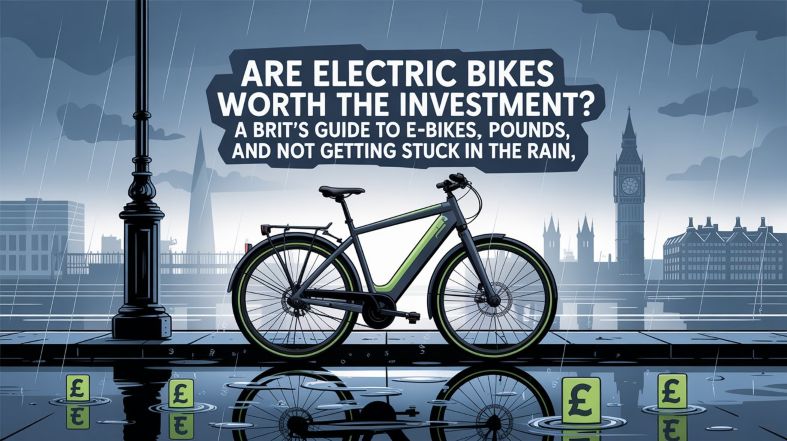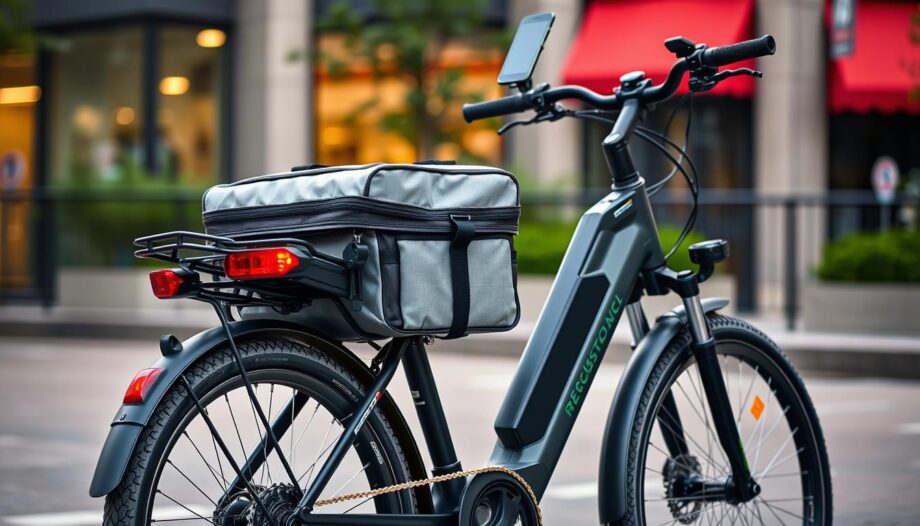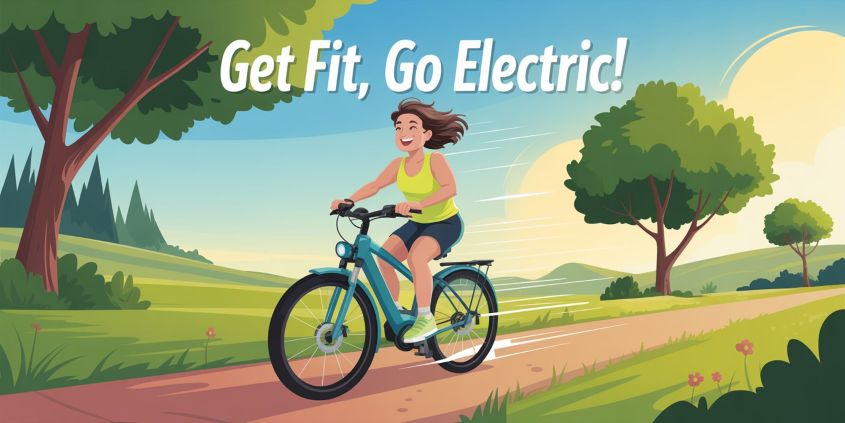Understanding how far an electric scooter can travel on a single charge is often more complex than it appears at first glance. Many have faced the daunting task of sifting through specifications only to wonder if those advertised ranges hold up in real-world scenarios. For instance, while some models promise 18 miles per charge, others boast a whopping 75 miles it’s clear that knowing how to calculate the range accurately is crucial.
To calculate the range of an electric scooter, you need to know the battery voltage and ampere-hours. You can find this information on the stickers on the battery itself, or from your E-Scooter manual
I do have ebike range calculation tables too here
The Basics
To figure out your scooter’s range, you need to know two key things:
- Battery Voltage (V)
- Battery Capacity (Ah)
Example Calculation
Let’s use a common setup: a 36V battery with a 10.4Ah capacity. Here’s the fun part:
- Multiply the voltage by the ampere-hours:
36V×10.4Ah=374.4Wh36V \times 10.4Ah = 374.4Wh36V×10.4Ah=374.4Wh - Divide this total by the average power consumption (typically around 20 watts per mile for many scooters):
374.4Wh÷20W/mile=18.7miles374.4Wh \div 20W/mile = 18.7 miles374.4Wh÷20W/mile=18.7miles
So, with a 36V 10.4Ah battery, you can expect to travel about 18.7 miles on a full charge using the throttle.
Here are some typical ranges for the most popular scooter motor sizes 250 watts 350 and 500-watt scooters.
| Motor (W) | Battery (V) | Capacity (Ah) | Wh | Consumption (W/mile) | Range (miles) |
|---|---|---|---|---|---|
| 250 | 36 | 6 | 216 | 20 | 10.8 |
| 36 | 10.4 | 374.4 | 20 | 18.7 | |
| 36 | 13 | 468 | 20 | 23.4 | |
| 36 | 15 | 540 | 20 | 27 | |
| 350 | 36 | 6 | 216 | 25 | 8.6 |
| 36 | 10.4 | 374.4 | 25 | 15 | |
| 36 | 13 | 468 | 25 | 18.7 | |
| 36 | 15 | 540 | 25 | 21.6 | |
| 500 | 48 | 10.4 | 499.2 | 30 | 16.6 |
| 48 | 12 | 576 | 30 | 19.2 | |
| 48 | 15 | 720 | 30 | 24 | |
| 48 | 17.5 | 840 | 30 | 28 | |
| 750 | 48 | 10.4 | 499.2 | 35 | 14.3 |
| 48 | 12 | 576 | 35 | 16.5 | |
| 48 | 15 | 720 | 35 | 20.6 | |
| 48 | 17.5 | 840 | 35 | 24 |
Electric Scooter Range Table for Larger Motors
| Motor Power (W) | Battery Voltage (V) | Battery Capacity (Ah) | Battery Capacity (Wh) | Avg. Power Consumption (W/mile) | Estimated Range (miles) |
|---|---|---|---|---|---|
| 1000W | 48V | 13Ah | 624Wh | 50 W/mile | 12.48 miles |
| 1000W | 48V | 17.5Ah | 840Wh | 50 W/mile | 16.8 miles |
| 1200W | 48V | 18Ah | 864Wh | 60 W/mile | 14.4 miles |
| 1600W | 48V | 16Ah | 768Wh | 80 W/mile | 9.6 miles |
| 1600W | 48V | 18Ah | 864Wh | 80 W/mile | 10.8 miles |
| 2400W | 60V | 24Ah | 1440Wh | 100 W/mile | 14.4 miles |
| 3000W | 50V | 43Ah | 2150Wh | 120 W/mile | 17.92 miles |
Key Factors Affecting Range
When it comes to finding an electric scooter that will reliably get you where you need to go, several important factors must be considered. Let’s take a closer look at each of these key elements and how they impact the distance an electric scooter can travel on a single charge.
Battery Capacity
The battery capacity of electric scooters is measured in watt-hours (Wh). The size of the battery directly influences how far a scooter can go on a single charge. Scooters with larger batteries provide more energy and thus, have a longer range. It’s like having a bigger gas tank in a car; the more fuel it holds, the further you can drive.
The measurement in watt-hours (Wh) is crucial when comparing different models. For example, a scooter with a 400Wh battery will generally offer a greater range than one with a 300Wh battery. When shopping for an electric scooter, be sure to consider how far you typically need to travel on a regular basis and choose a model with an appropriate battery capacity to meet your needs.
Rider Weight
The weight of the rider can significantly impact the overall range of an electric scooter. Heavier riders consume more power while riding, which results in reduced battery efficiency and ultimately, a shorter range. Most scooters specify a maximum weight limit to ensure optimal performance. Riders need to be mindful of this specification and select a scooter that is suitable for their body weight.
Riders should always adhere to the manufacturer’s guidelines regarding weight limits to avoid performance issues or potential safety hazards. This ensures that the scooter operates as intended and provides the best possible range for each individual rider.
Terrain
The type of terrain has a significant impact on the energy consumption of an electric scooter. Inclines and rough surfaces require more power to navigate, leading to reduced battery efficiency and shorter travel distances. Scooters will naturally cover shorter distances on hilly routes compared to flat roads due to the increased energy demand.
To put this into perspective, imagine going for a run on a flat track versus tackling steep hills. The effort required is noticeably different, just as an electric scooter’s energy consumption varies based on the terrain it travels on.
Riding Style
Your riding style also plays a crucial role in determining the range of an electric scooter. Aggressive acceleration and maintaining high speeds can result in faster battery depletion. On the other hand, riding smoothly and consistently at moderate speeds maximises the overall range of the scooter.
It’s essential to strike a balance between enjoying the exhilarating experience of riding and maximising the distance you can travel on a single charge by adopting efficient riding habits.
Weather Conditions
Weather conditions, particularly temperature, can impact the performance of an electric scooter. Cold weather may reduce battery efficiency, leading to a shorter achievable range, while moderate temperatures are conducive to maintaining optimum battery performance.
When planning longer rides during colder periods, it’s important to account for potential reductions in battery efficiency due to lower temperatures. Proper maintenance and care during such conditions will help mitigate adverse effects on battery performance.
Understanding these key factors provides valuable insight into how varying conditions and individual habits can influence the range of an electric scooter. Each element contributes to the overall performance and suitability of different models based on specific needs and usage scenarios.
Calculating the Range: Step-by-Step Guide
Understanding how far your electric scooter can go on a full charge is crucial for planning your trips and ensuring you won’t be stranded with a dead battery. To calculate the range, we need to follow three key steps. Let’s walk through each one in detail.
Step I – Determine Battery Capacity
To get started, we first need to identify the battery capacity in watt-hours (Wh). This information is usually found in the scooter’s specifications list or manual. The battery capacity represents the amount of energy stored in the battery and directly impacts the scooter’s range.
The capacity is essentially the fuel tank of the electric scooter – the larger the capacity, the further you can travel on a single charge. It’s similar to how a bigger gas tank allows a car to cover more distance before needing a refill. So, when comparing scooters, it’s important to pay close attention to their battery capacities to ensure you select one that meets your specific range requirements.
Step II – Find Power Consumption Rate
Once you have the battery capacity, the next step is to find the scooter’s power consumption rate, typically listed in watts per mile (W/mile). This figure provides insight into how efficiently the scooter uses its battery power while in operation.
The power consumption rate determines how many watts the scooter uses to cover one mile. It’s akin to knowing how many miles a car can travel on a gallon of gas. Understanding this rate allows you to gauge how proficiently a scooter utilises its energy, giving you an indication of its overall efficiency and range potential.
Step III – Use the Range Formula
Now, armed with the battery capacity and power consumption rate, it’s time to put them together using a simple formula: R = B / P where R is the range in miles, B is the battery capacity in watt-hours, and P is the power consumption rate in watts per mile.
This formula serves as our guidepost for estimating the range of an electric scooter. By dividing the battery capacity by the power consumption rate, we can accurately determine how far a scooter can travel on a full charge. For example, if a scooter has a 500Wh battery and a consumption rate of 20W/mile, inserting these values into the formula gives us a range of 25 miles – a key piece of information for planning your rides.
Armed with this understanding and practical approach, you can confidently assess different scooters, gauge their potential ranges, and make informed decisions based on your specific commuting needs. Calculating the range empowers you as a rider and ensures that you’re equipped with all the necessary knowledge before embarking on any journey with your electric scooter.
How accurate are the advertised ranges of electric scooters compared to real-world usage?
The accuracy of advertised ranges for electric scooters can vary. It is actually pretty much impossible to give you a 100% accurate range estimate because there are too many factors, I know there are fancy tools for calculating range, but all are just estimates.




